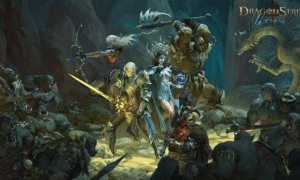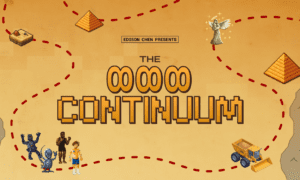There’s a moment every player knows well: the pause before the result. It doesn’t matter if it’s a loot box, a spinning reel, a card flip, or the outcome of a mystery level. That second between action and revelation holds a strange kind of electricity. It’s not about certainty. It’s about possibility. And humans are drawn to it more than we admit.
Our fascination with randomness runs deep — not just in how we play, but in how we’re wired. Games tap into this trait with surgical precision. They don’t always promise victory, but they offer something more compelling: the surprise of what comes next.
When the brain meets chance
Surprise has a signature in the brain. It shows up in bursts of dopamine, those short pulses that mark novelty and reward. This isn’t just about winning; it’s about the unexpected twist. That’s why opening a mystery chest feels more exciting than getting a fixed reward. Uncertainty activates the reward system more powerfully than predictable outcomes.
Slot-style mechanics in particular understand this deeply. The spin, the sounds, the near-misses — they’re calibrated to push the brain into a heightened state of attention. Our neurons are always scanning for patterns, and when the outcome can’t be predicted, we lean in closer.
This is part of what makes platforms like Super88 stand out. They balance randomness with rhythm. The experience isn’t chaotic—it’s sculpted to keep players engaged without overwhelming them. Every interaction feels fresh, but never disorienting. The thrill remains intact, wrapped in colorful cues and satisfying feedback loops.
The psychology of unpredictability
At the core of every game mechanic that uses randomness is a promise: you don’t know what’s coming, and that’s the point. Whether it’s a drop system in a role-playing game or randomized enemies in a strategy title, the unknown draws people in. Why? Because it breaks routine.
Human brains love surprises when the stakes are low. In life, uncertainty causes stress. In games, it creates tension without consequence. That’s the magic of play. The brain registers surprise, triggers reward, and stores the event as significant—all without the real-world fallout of actual risk.
We’re not just reacting emotionally. Randomness engages working memory, focus, and anticipation. It heightens engagement, encourages continued interaction, and—even in failure—can leave a positive imprint if the journey was exciting.
That’s why even losing in a well-balanced game doesn’t always feel like failure. If the loss came through an unexpected twist, the experience still lights up the brain’s attention systems. The memory becomes sticky. We come back for more.
Games as training grounds for randomness
The world doesn’t always follow scripts. Life itself is unpredictable, full of variables, coincidences, and outliers. In a strange way, games help us cope. By offering controlled environments where randomness can be experienced without harm, they train the brain to manage uncertainty.
This is especially clear in titles that mix skill with chance. A card game where you draw blind. A shooter with unpredictable spawns. A strategy sim where weather changes mid-battle. These games reward adaptability over rigid planning. They teach players to react, to stay sharp, and to enjoy the process as much as the outcome.
Players who grow comfortable with uncertainty in games are often more flexible thinkers. They learn to hold multiple outcomes in mind. They’re less thrown off by change. The randomness becomes a tool, not a threat.
Balancing Surprise and Structure in Game Design
Game designers have long questioned the right dose of unpredictability. Too much, and outcomes feel unfair. Too little, and the excitement fades. The ideal formula lives somewhere in between—enough uncertainty to spark anticipation, balanced with structure that gives players a sense of control.
This balance is something Pragmatic handles with precision. Their games are built around thoughtful pacing, clear visual feedback, and intuitive mechanics that help players read the flow without guessing blindly. When randomness enters the scene, it’s not abrupt—it’s framed with signals that shape expectations.
Rather than overwhelm, their titles craft randomness into a kind of rhythm. Surprise becomes part of the pattern. Players stay engaged, not because they feel manipulated, but because the unpredictability makes sense. It’s excitement grounded in design—a moment where the brain rewards not just the outcome, but how the journey was delivered.
Near-misses and the illusion of control
One of the most fascinating quirks in game psychology is the near-miss. The spin that almost wins. The card that would’ve changed everything. The missed shot by a pixel. These moments can feel more intense than actual success. Why? Because they trick the brain into thinking success was nearly achieved.
Near-misses trigger the same reward centers as wins—just with slightly less intensity. This creates a feedback loop: players feel encouraged, motivated, and even more determined to try again. It’s not irrational; it’s biological.
Games that harness this correctly build stronger player engagement. The key is fairness. If players feel outcomes are genuinely within reach, they’ll interpret randomness as a challenge rather than a barrier. If it feels rigged, the experience becomes frustrating, and the emotional reward vanishes.
Surprise as narrative
Not all randomness is about numbers. Some games use surprise as a storytelling device. Random encounters, branching dialogue, or unplanned consequences—all these inject unpredictability into narrative. It mimics life, where small actions sometimes ripple into unexpected events.
This style of design gives players ownership over their experience. Even if outcomes are random, the journey feels personal. Every twist, every strange coincidence becomes part of the player’s unique memory of the game.
Surprise here functions as engagement, not confusion. The unpredictability adds flavor, and the brain marks these deviations from the norm as meaningful. That’s why players often remember the weird, unscripted moments more vividly than the plot.
A dance between control and chance
The best games don’t just drop randomness into the system. They choreograph it. They know when to increase unpredictability and when to pull back. They understand that randomness is most effective when paired with agency.
When a player chooses to take a risk, the result feels earned—even if it doesn’t go their way. That’s very different from being blindsided by an unannounced mechanic. Consent matters, even in play. Especially in play.
Good design respects the player’s role in the equation. It offers surprise without chaos. Excitement without confusion. Randomness becomes not a gimmick, but a design pillar—one that keeps engagement high and neural circuits primed for response.
We don’t love randomness because we’re irrational. We love it because we’re wired to seek patterns, to crave surprise, and to chase the unexpected. Games meet us there. They offer moments of tension and release, action and reaction, the known and the unpredictable—all in rapid succession.
When that flicker of uncertainty appears, our attention sharpens. We lean forward. The brain hums. And in those brief, flashing seconds, play becomes more than entertainment. It becomes a mirror to how we think, react, and feel—wired not for certainty, but for wonder.
Read More From Techbullion



































